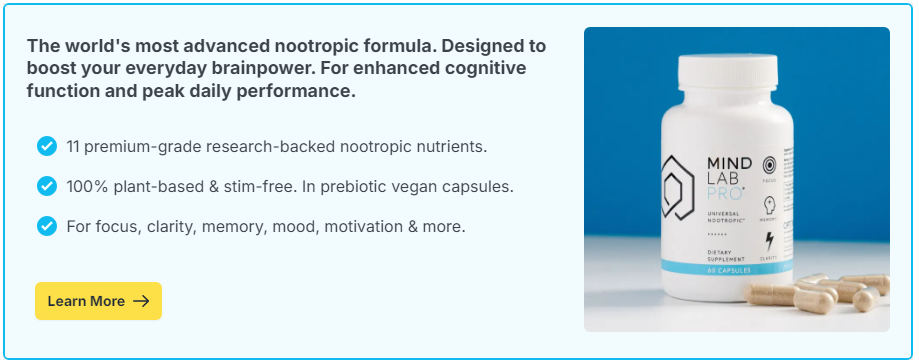
Statisticians live where numbers and nuance meet. One shaky assumption can bend a model, one late night can turn clean code into spaghetti. Clear logic takes a steady mind, good habits, and sometimes a few tools that help attention and memory hold firm. Nootropics, used thoughtfully, may support the kind of focused, level thinking that keeps your confidence aligned with the data.
Contents
Why Analytical Thinking Gets Cloudy
Even careful minds drift when deadlines stack or datasets misbehave. Knowing the usual culprits lets you design a defense that protects judgment.
Working Memory Overload
Model building pulls on many threads at once: assumptions, priors, diagnostics, and edge cases. When working memory is saturated, it becomes harder to track conditional branches or spot a silent data leak.
Stress And Shortcuts
Under pressure, the brain leans on quick patterns. You might accept a familiar model family or a default hyperparameter set without testing whether today’s data deserves something different.
Fatigue And Confirmation
Sleep debt makes it tempting to stop searching once the result fits the story. Tired eyes are more likely to miss a coding slip or a violated assumption, such as independence or equal variance.
Foundations First, Then Add Tools
Nootropics do their best work on top of stable habits. Think of these as your lab safety goggles for the brain.
Guard The Sleep Window
Consistent sleep improves attention, reaction time, and memory consolidation. It also reduces the odds that you will accept a flimsy model because you want to be done.
Fuel That Matches The Task
Breakfast with protein, fiber, and healthy fats keeps blood sugar steady for long coding blocks. Hydration helps more than most people expect. A glass of water can be the difference between chasing a phantom bug and spotting the extra comma.
Rituals That Reduce Error
Use a pre-analysis checklist: data lineage, missingness plan, leakage audit, baseline model, cross validation plan, and metrics that match the question. End sessions with a two minute log of open threads so your future self can resume quickly.
Nootropics That May Support Logic And Analysis
These ingredients appear frequently in comprehensive cognitive formulas and are discussed by professionals who want clear, steady thinking. This is not medical advice. If you have a condition, are pregnant, or take medication, speak with a clinician first. Start low, add slowly, and track your response.
L-Theanine For Calm, Even Focus
L-Theanine, an amino acid found in tea, promotes a relaxed alert state. When paired with a modest amount of caffeine, it can smooth jitters and encourage patient, methodical work during long debugging or literature review sessions.
Citicoline For Clean Mental Energy
Citicoline provides choline for acetylcholine production and supports cell membranes. Many analysts report crisp attention and better task engagement, which suits long stretches of data cleaning or feature engineering.
Bacopa Monnieri For Memory And Retention
Bacopa is commonly used for memory and learning. Effects are gradual, typically noticed after consistent use over several weeks. This fits statisticians who must retain papers, proofs, and toolchain details.
L-Tyrosine For High-Pressure Sprints
L-Tyrosine is a precursor for dopamine and norepinephrine. During sleep restriction or acute stress, it may support working memory in time sensitive analysis, such as pre-release metrics or rapid incident investigations.
Phosphatidylserine For Task Switching
Phosphatidylserine, a structural phospholipid in brain cells, is studied for memory and stress response. It is often chosen when work demands quick pivots between modeling, stakeholder calls, and peer review.
Rhodiola Rosea For Perceived Fatigue
Rhodiola is an adaptogenic herb used to support stress resilience and motivation. Earlier day timing is common when you anticipate a marathon session.
Lion’s Mane And Maritime Pine Bark Extract
Lion’s Mane is popular for general cognitive wellness interest. Maritime pine bark extract is valued for circulation support. Both are frequent companions in broad formulas aimed at attention, memory, and mental stamina.
Match The Tool To The Task
Different phases of analysis ask your brain for different skills. Here is a practical way statisticians apply the ingredients above, always within personal tolerance and medical guidance.
- Data Cleaning Day: Citicoline for steady engagement, with L-Theanine paired to morning coffee to keep edges smooth while you grind through joins and outlier logic.
- Model Design And Diagnostics: Phosphatidylserine to help with rapid context shifts between residual plots, feature importance, and fairness checks. Keep caffeine moderate so patience stays high.
- Paper Reading And Replication: Bacopa Monnieri taken consistently over weeks to support retention of results, limitations, and methods.
- High-Stakes Deadline: During acute strain, some analysts use L-Tyrosine earlier in the day for working memory support, paired with short movement breaks and a strict checklist.
- Long Review Meetings: L-Theanine with a small amount of caffeine for calm listening, plus hydration and light snacks to avoid a midafternoon dip.
Logic Safeguards That Prevent Expensive Mistakes
Supplements can help you show up with a steadier mind. Guardrails make sure that steady mind moves in the right direction.
Assumptions Audit
Write assumptions explicitly: independence, stationarity, missing at random, linearity, or any domain constraints. For each, list a quick test and the expected failure mode. If the test fails, pick a Plan B model before you get attached to Plan A.
Base Rates And Priors
Include prior information when it exists. A simple prior can prevent wild swings from small samples. When priors are not available, build a few reference class baselines so your posterior does not live in fantasy land.
Holdout Honesty
Keep a true holdout, and keep your hands off it until the end. Resist the siren call of one more peek. If you peek, you leak.
Adversarial Review
Ask a colleague to attack your pipeline. Red team your data cleaning rules, leakage risks, and choice of metrics. Better to find the crack in private than watch it widen in production.
A Sample Workday For Clearer Thinking
Use this as a template, then adjust to your biology and workload.
- Morning reset: Hydrate, step into daylight for two to five minutes, and do a short mobility set.
- Breakfast and focus pair: Balanced meal. If coffee makes you edgy, pair it with L-Theanine. Consider Citicoline during the first deep work block if it suits you.
- Deep work block 1, 90 minutes: Data cleaning or core modeling. Phone out of reach. Halfway, stand and stretch.
- Review checkpoint, 10 minutes: Update your assumptions audit and jot open threads.
- Midday fuel: Protein forward lunch with greens and whole grains. Short walk outside.
- Deep work block 2, 60 to 75 minutes: Diagnostics, fairness checks, or documentation. If fatigue builds, earlier timing of Rhodiola may help some people.
- Collaboration window: Stakeholder sync or peer review. Keep a written summary to reduce rework later.
- Wrap and wind down: Log next steps, dim screens in the last hour, and set a firm sleep window.

